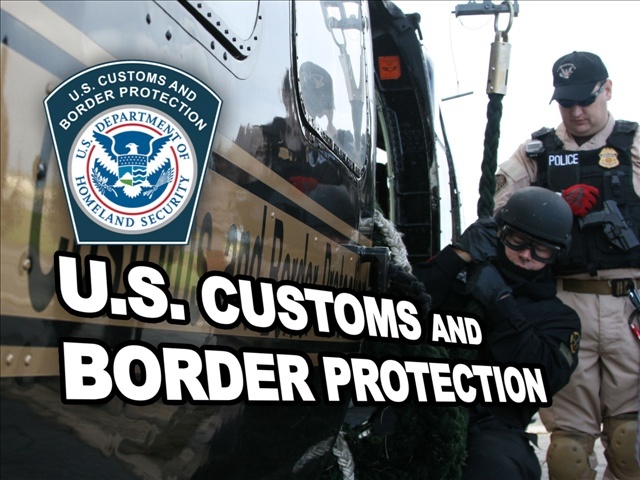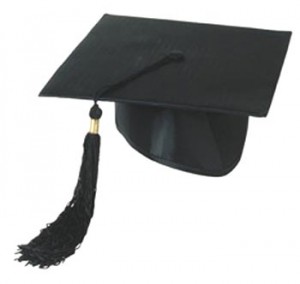
Jordan
Toronto, ON
Female, 28
Space Waitress, Trolley Dolly, Stewardess...everyone has their own term for us. We are the baby-sitters, life-savers, servers, cleaners and all-around problem solvers for any and every in-flight issue. Sometimes we get a bad rep for being apathetic and miserable despite having what looks like a glamorous job, so here's a peek into the gritty details beneath the shiny surface to explain why the job - though incredible in lots of ways - is more than just snappy uniforms and matching luggage.
The airline I work for is quite unique in that we don't base our schedules on seniority, so someone who's been working at the company for 10 days has an equal chance to get a dreamy layover as does the FA who's been there 10 years. Every month we plug our requests - days off, layovers, length of pairings, etc - into a computer program and a week and a half later it spits out a schedule. It tries to make as many people happy as possible based on the premise that everyone will want different things. It works quite well, but generally you can expect two months to be great and the third to be well, not so great. I tend to work with a lot of the same people because I live in a city with less than a tenth of the company's entire FA population so we see each other more often. Outside the city, I can work with someone once and never see them again for the rest of my flying career. I suppose that's a pro or con depending on the person!
Ah, now that, my friend, is because everything about airport security is designed to confound and frustrate you! But I'll do my best to provide some insight in the carry-on department. The people at the security checkpoints who x-ray everything from your laptop to your unmentionables are government employees working for agencies like the Transportation Security Administration. Their main concern is ensuring that the contents of your luggage are safe, and I'm quite sure the only size requirements they uphold are for liquids, gels and aerosols - not the size of the suitcase they're in. According to the TSA website this is to dissuade you from transporting questionable substances like gasoline, tear gas, and copious amounts of gravy. Airlines on the otherhand, are more concerned with what bags will fit in the overhead bins or underneath the seat, and what can be lifted by flight attendants without the use of a crane. Since each airline uses different models of aircrafts, you'll have to check their website to find their particular carry-on restrictions for weight and size. Which is just what I told a random stranger who passed me on the street while I was in uniform and asked me if his accordian would fit in the overhead bin on his flight to Greece. Here's hoping the reason he needed it in the cabin with him was because of its fragility and not because he wanted to serenede the other passengers for 10 hours.
I once worked a flight which encountered clear air turbulence and we dropped so rapidly that people hit the ceiling. Thankfully most people were seated and there weren't any serious injuries. I had been sitting but not buckled up (take note seatbelt haters!) and I flew into the air several feet and landed in a heap on the floor, covered in water from an overturned bottle with one shoe off and the other shoe on. It happened so suddenly i didn't have time to be scared, but I was shaken up afterwards. I now have a healthy respect for turbulence and do my best to keep carts and guests secured in their proper place! Apart from that the scariest experiences I encounter are the onboard bathrooms and I'll spare you those details.
I'm sure that in some cases it does, but there are ways to make the job work for you. Parents can request to work 1-day pairings so they can be home in time to put dinner on the table. Other FAs prefer to work 5 days in a row so they'll have a week off to stay home afterwards. As for the significant others, we just try to have one in each city. Kidding. I'm a fan ye olde adage 'absence makes the heart grow fonder', plus I'm lucky to have friends and family that support what I do - maybe because they sometimes benefit from the flight discounts...
CBP Officer
 What are the telltale signs you look to indicate someone's lying?
What are the telltale signs you look to indicate someone's lying?
MBA Student
 How many years of work experience do you REALLY need before applying?
How many years of work experience do you REALLY need before applying?
3D Games Developer/Programmer
 How does 3D fool the human brain into seeing an extra dimension?
How does 3D fool the human brain into seeing an extra dimension?
The ideal way to handle a guest who isn't cooperating is to deny them boarding. Unfortunately that only works while we're still on the ground and as of yet we haven't resorted to booting people off the plane mid-flight. So, common sense diffusion tactics are a good back-up since often people who are upset just want someone to listen to them and strangely, yelling at them can make things worse. If people are beyond upset and moving more towards aggressive, drunk, and borderline abusive, we resort to cutting them off from booze, informing the captain, and in extreme cases, having police meet the aircraft. Oh, and because it's not uncommon for a plane to be staffed with a handful of 90lb girls in heels, we have rehearsed procedures in case a passenger three times our size gets violent, but if I told you about those trade secrets I'd have to kill you with my stiletto. Sorry.
It may seem like a last ditch effort to make you as uncomfortable as possible before letting you out of our clutches but there's actually a good explanation for our fixation with your seatback. Take-off and landing are considered the critical phases of flight during which accidents and incidents are most likely to occur. When we secure the cabin before arrival our goal is to whip the plane into shape so we can increase each guest's chances of survivability should something go wrong. Bear with me as I get a little morbid. Say the landing gear doesn't fully extend, or something unexpected blocks the runway causing the aircraft to come to a really sudden and forceful stop. Your body will be thrust forward toward the nose of the plane. If you're in a reclining position your body will have further to travel and even one or two inches at that speed can create a lot of momentum resulting in a more damaging impact on your body when it hits the seat in front of you. By sitting more upright you're putting your body in a position closer to how it will naturally react if thrown forward. Each chair is designed to absorb the impact from your body should you be unexpectedly thrown forward. However, if the guest in front of you has their seat reclined you'll hit it at an awkward angle and possibly injure yourself further. Finally, imagine once the plane stops there's cause for an evacutation (what a bad day you're having!). The faster you can get out of your seat and out the door the better. If the row in front of you has even one seatback reclined it will restrict your access to the aisle at a time when each second counts. We ask people to stow their bags as far as possible underneath the seat in front of them for the same reason. I hope that makes it a bit easier to stomach the next time you get rudely awakened from your nap to bring your seat forward! If you don't understand why we're asking you to do something chances are there's a safety regulation behind it.
I'm relieved to say that I can't provide any sordid details when answering this question, having never caught anyone having that kind of fun on my flights. However, that hardly makes for an interesting answer so I polled some of my co-workers to get some insight. The general consensus? Yes, the Mile High Club happens, but not as often as you might expect. (or maybe it happens all the time and people are just very discrete? I doubt it.) It seems like every flight attendant knows some story about people getting caught in the act but very few have actually stumbled upon it firsthand. I'm willing to bet though that FA's who work red-eye flights while the cabin is nice and dark, on airlines that hand out free blankets, or on planes with really spacious restrooms deal with would-be Mile High Clubbers far more often. And when it comes to the employees themselves giving a little 'extra service', I think a lot of cabin crew have spent too much time cleaning the insides of a plane to really get turned on by the idea of getting it on in one. More common is "midnight knocking": you get to the hotel, say goodnight to your crew and everyone parts ways. Not long after there's a knock at your door. It's someone from your crew! Turns out they forgot to pack toothpaste, or their phone cord, or, my favourite, they need to borrow a cup of tap water to iron their uniform. Subtle, right? But if you’re the kind of person looking for an impromptu hook-up, a line like that does the trick. Even if it is a little hard to swallow. ...That's what she said.
-OR-
 Login with Facebook
Login with Facebook (max 20 characters - letters, numbers, and underscores only. Note that your username is private, and you have the option to choose an alias when asking questions or hosting a Q&A.)
(A valid e-mail address is required. Your e-mail will not be shared with anyone.)
(min 5 characters)
By checking this box, you acknowledge that you have read and agree to Jobstr.com’s Terms and Privacy Policy.
-OR-
 Register with Facebook
Register with Facebook(Don't worry: you'll be able to choose an alias when asking questions or hosting a Q&A.)